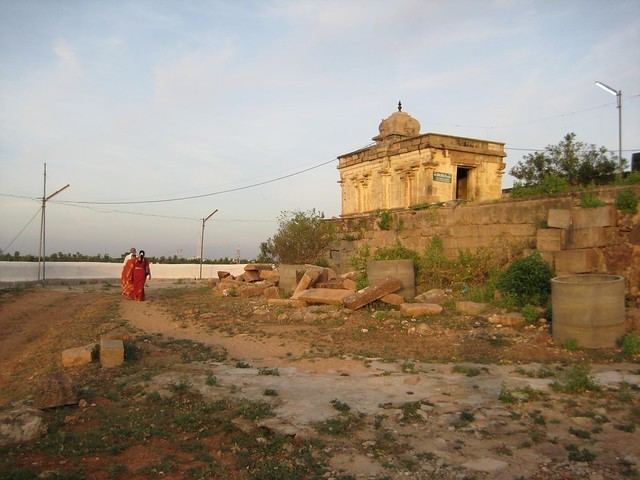Proper name Uyyakondan Thirumalai Primary deity Ujjevanathar District Tiruchirappalli district | Country India Location Tiruchirapalli Consort Anjanakshi Amman | |
 | ||
Similar Rani Mangammal District M, Erumbeeswarar Temple, Our Lady of Lourdes Church - T, Thayumanaswami Temple - Rockfort, Ucchi Pillayar Temple | ||
Uyyakondan Thirumalai Temple (also called Ujeevanathar temple, Karkudimalai or Thirumalainallur)) is a Hindu temple dedicated to the deity Shiva, located on the banks of Uyyakondan river, Trichy, in the South Indian state of Tamil Nadu. Shiva is worshipped as Uyyakondan, and is represented by the lingam. His consort Parvati is depicted as Anjanakshi Amman. The presiding deity is revered in the 7th century Tamil Saiva canonical work, the Tevaram, written by Tamil saint poets known as the Nayanars and classified as Paadal Petra Sthalam.
Contents
The temple complex covers four acres, constructed on a hillock 30 m (98 ft). The temple has a number of shrines, with those of Uyyakondar and his consorts Maivizhi and Kanniyumaiyal, being the most prominent. All the shrines of the temple are enclosed in large concentric rectangular granite walls. The temple is approached by a flight of steps from the basement that houses the temple tank.
The temple has four daily rituals at various times from 6:00 a.m. to 8:30 p.m., and four yearly festivals on its calendar. The Brahmotsavam festival is celebrated during the day of the Magam (February - March) is the most prominent festival.
The original complex is believed to have been built by Cholas, while the present masonry structure was built during the Nayak during the 16th century. In modern times, the temple is maintained and administered by the Hindu Religious and Charitable Endowments Department of the Government of Tamil Nadu. The temple has inscriptions from the Chola period.
Architecture
The temple is located on a rock about 30 metres (98 ft) tall and is surrounded by granite walls. The temple is reached by a flight of steps. The shrine of Vinayagar is located in a cut in the first ten steps and the other shrines are located on the hillock. The whole temple is fortified and the temple tank is located inside the fortification. The temple is built in Sembian age of Cholas around 950 CE. The main deity of the temple faces western direction. There are two shrines of Goddess in the temple.
Legend
A Sri Lankan king is believed to have been blessed by the deity here.
History
The temple has inscriptions dating from Kulothunga Chola I (1070-1118 CE), that speaks of separate community known as 'Rathakarar', a sect of expert capenter skilled in the art of designing and making temple cars. The temple was occupied by French and English forces during the siege of Trichonopoly (old Tiruchirapalli) in 1753-54. After the war battle of Sugar-loaf rock, English Major Lawrence marched against the fortified temple and carried it by assault.
Literary Mention
The temple is revered in the 7th-8th century Saivite canonical literature, Tevaram, by all the three poets, namely, Appar, Campantar and Cuntarar.
Cuntarar describes the feature of the deity as:
Festivals
The temple priests perform the puja (rituals) during festivals and on a daily basis. The temple rituals are performed four times a day; Kalasanthi at 8:00 a.m., Uchikalam at 12:00 a.m., Sayarakshai at 6:00 p.m, and Arthajamam at 9:00 p.m.. Each ritual comprises four steps: abhisheka (sacred bath), alangaram (decoration), naivethanam (food offering) and deepa aradanai (waving of lamps) for Kachabeswarar and Anjanatchi. There are weekly rituals like somavaram (Monday) and sukravaram (Friday), fortnightly rituals like pradosham, and monthly festivals like amavasai (new moon day), kiruthigai, pournami (full moon day) and sathurthi. The nine-day Brahmotsavam during the Tamil month of Masi and Shivaratri are the most important festivals of the temple.
